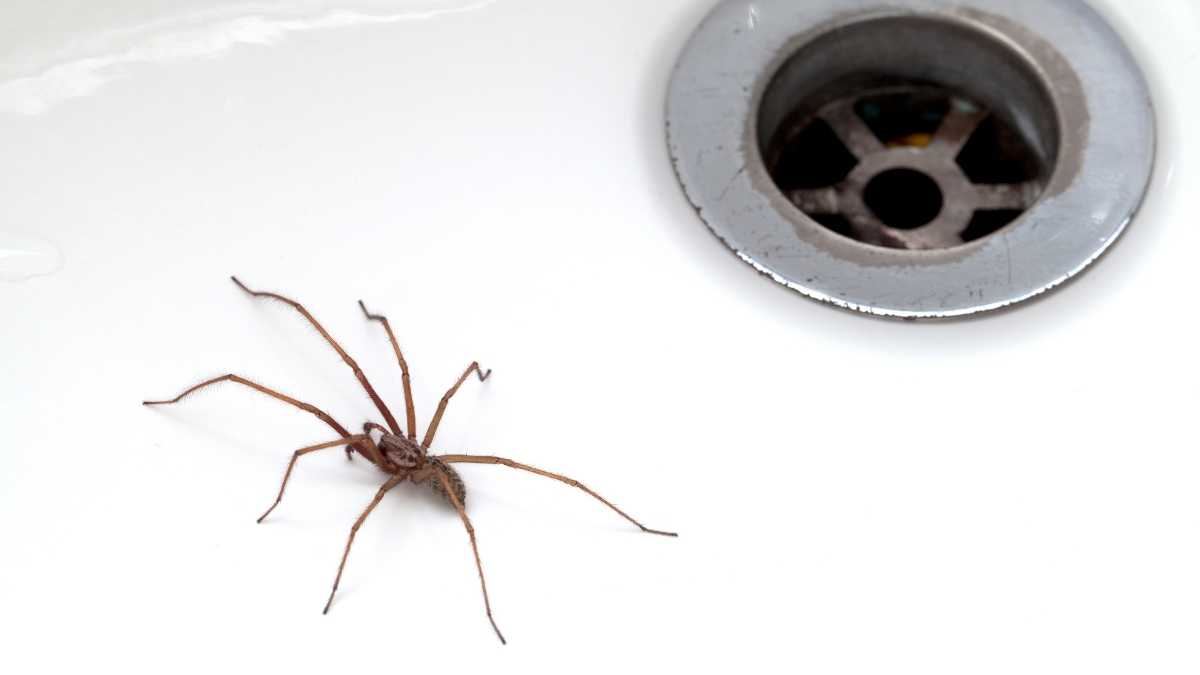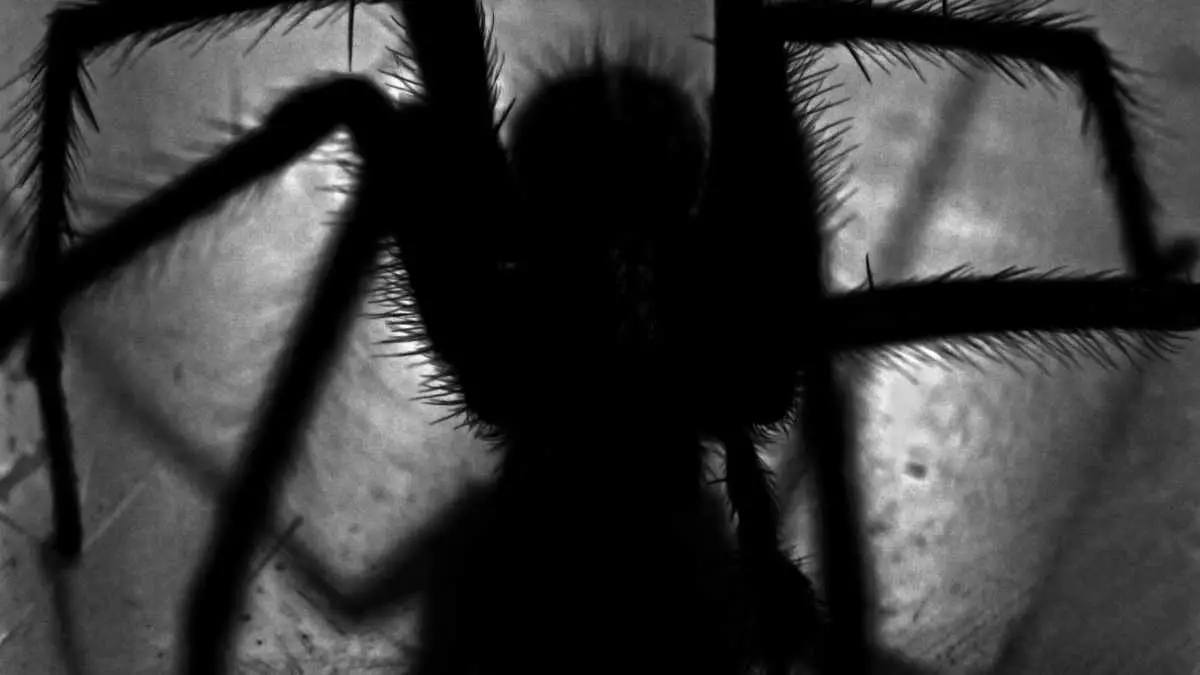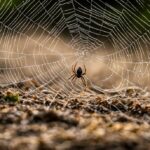Spider webs are common in a house, and it doesn’t matter how often you dust, right?
Discovering spiders in your house brings with it a little mystery. How did they enter the house?
What are the most common spider entry points?
Read on to find out how spiders gain entrance into your house, common spider attractions, how spiders multiply in your house, and effective methods to get rid of those eight-legged pests.
Let’s get started!
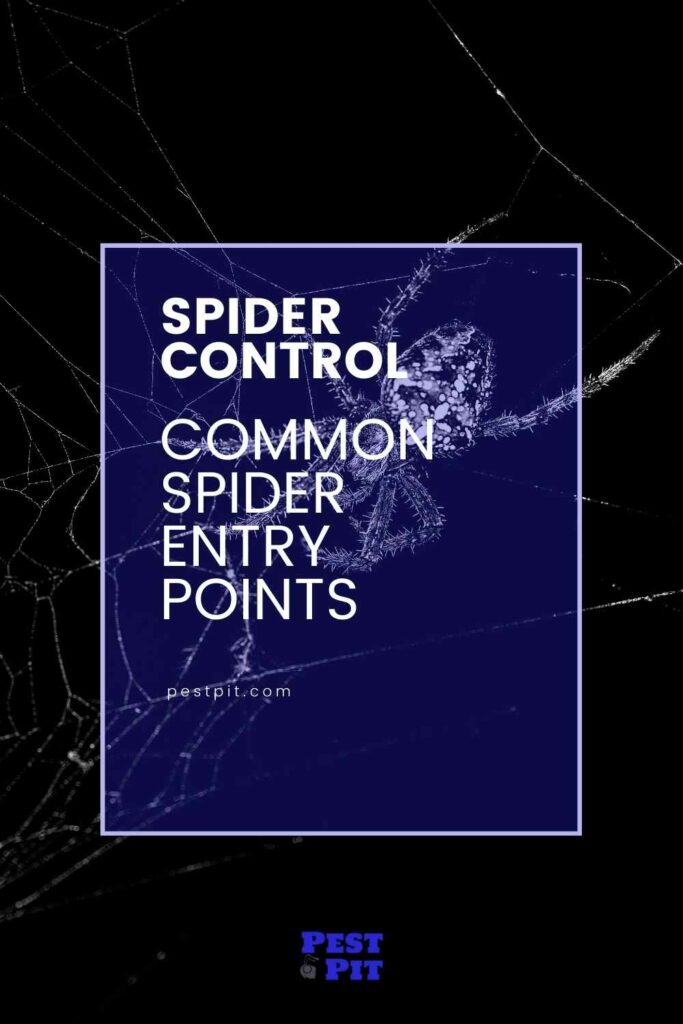
List of common things that attract spiders
It seems that spiders appear from nowhere. You get rid of one (carefully using a glass), and before you know it, another has taken its place. And you find yourself repeatedly asking, “Why can’t I get rid of these spiders permanently?”
That is because your home will have several things that spiders are attracted to, and it’s challenging to get rid of all of them!
Here are some of the reasons why spiders may enter your house;
- Unfavorable/harsh weather: Common house spiders are fragile. Thus, they seek refuge even when there is the slightest change in the climate. Therefore, spiders seek shelter in homes whenever the weather gets too hot, too cold, or too wet.
- Potential food source: Another spider attraction is a food and water source. Spiders primarily feed on insects (bugs, mosquitoes, flies, fleas, moths, earwigs, crickets, wasps, gnats, etc.). Thus, the presence of these insects is an invitation to spiders. Also, some spiders feed on fruits, so leaving fruits open can also attract spiders into your house.
- Solitude: Generally, most spiders enjoy solitude, mainly because they like a higher chance of catching a meal. The spiders’ solitary nature explains why they stay in dark places and make their webs in odd, hard-to-reach corners of the house.
- Mating/Breeding: The possibility of finding a spider in your house is usually higher during the mating season. During mating, spiders invade homes to find partners and proper breeding grounds (furniture, woodpiles, debris, etc.) for their eggs.
Examples of spider entry points and their hideouts
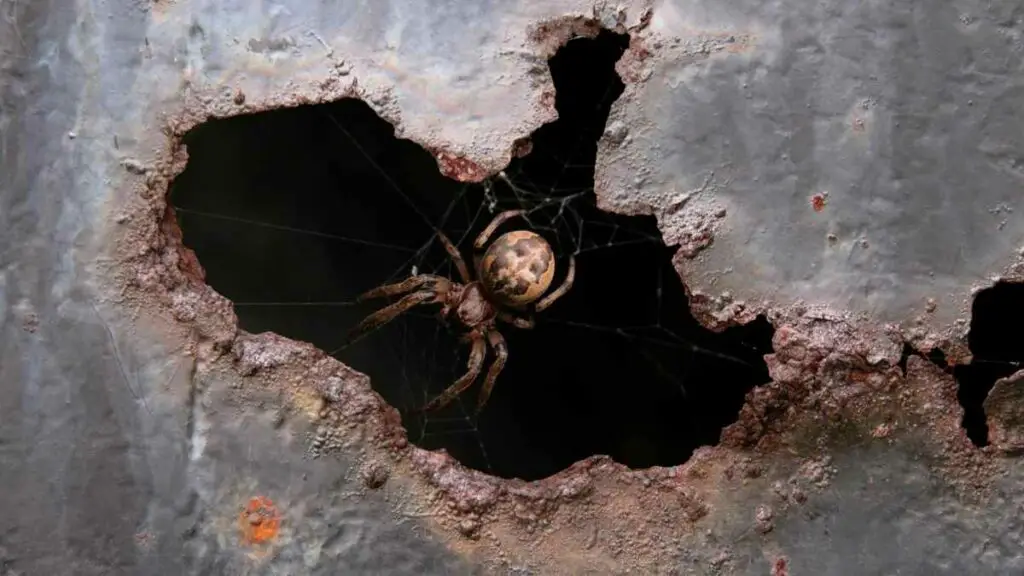
Now, you are aware of what attracts spiders to your house. The next question is, “How do spiders gain entrance into the house?”
Here are some of the typical entry points in the house:
- Cracks/Openings: Spiders will enter your home through openings/cracks. Spiders take advantage of openings like holes in window frames, cracks in foundations, crawl spaces and walls, and the gap below doors. Spiders can even walk through open doors if you allow them.
- Pipes: Other common spider entry points include cracked house pipes (especially inlaid pipes). These pipes may lose their integrity over time and develop cracks which create openings for spiders to infest the house.
- Overgrown Trees: Many spiders make their home in trees. Crab spiders are also called tree spiders because they are typically found in trees. When a spider-infested tree is present around your house and overgrows enough, its branches may serve as a bridge for the spiders to cross into your home.
- Roof spaces: Your roof may have gaps to let spiders in. Let’s not forget that spiders are excellent climbers, so nowhere is off-limits.
Lastly, spiders may get into your house by accidentally carrying spider eggs or the spiders themselves into the house.
The spiders may lay their eggs in your garage or cartons, and you carry them into the house unaware. In addition, you may even carry spider eggs on a sofa, waiting to be hatched, when moving furniture from one place to another.
Spider breeding; how do spiders multiply in your house?
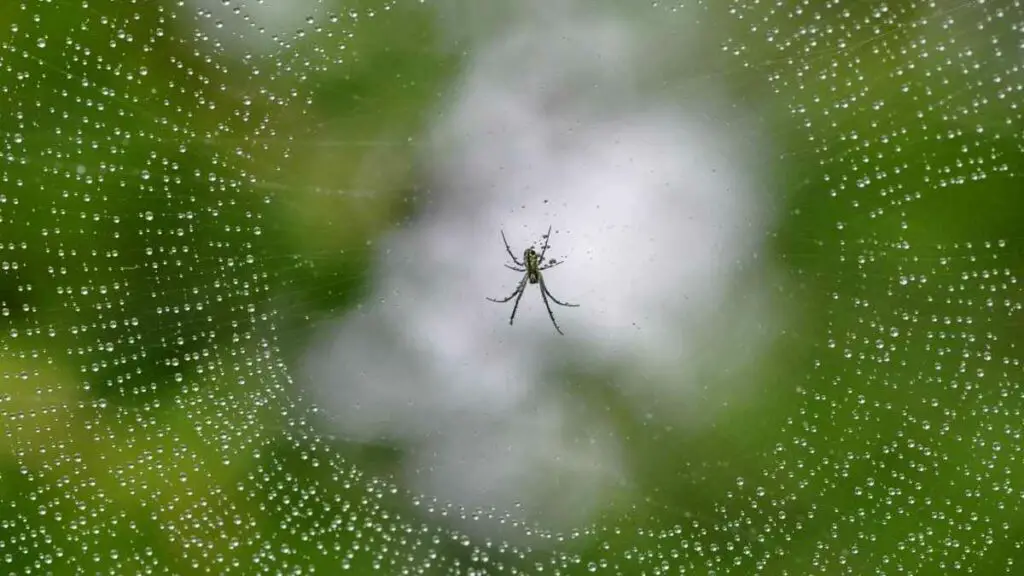
In most of the entry points listed above, you are unlikely to see a clutter of spiders moving into your house. How, then, do a handful of spiders that enter your home multiply into such numbers enough to be tagged an infestation?
When a male spider is mature and ready to start reproducing, it spins a sperm web. The sperm web’s structure varies from species to species.
Then, the male spider collects his sperm using the web before depositing them on his pedipalps. Then, he goes about seeking a female spider to mate with.
On the other hand, the female spider either lays her eggs on her web (protecting the eggs with silk) or holds them in egg sacs/cocoons until they hatch.
A female spider can produce around 17 egg sacs in her lifetime, resulting in over 4000 eggs! So, you now understand why you have so many spiders around your house.
What are the Signs of a spider infestation?
Next is the question, “How do you know you have a spider problem?” Below you have the common signs of a spider infestation:
Webs

One significant and common indicator of a spider infestation is the presence of webs. About half of the spider species produce webs.
Spiders make their webs in ceiling corners, chandeliers, pieces of furniture, boxes, containers, attics, basements, closets, and other dark places.
You must note the difference between a cobweb (usually empty and filled with dust) and an active spider’s web (usually holding an egg sac or a trapped insect).
While an active spider’s web may indicate a spider problem, a cobweb shouldn’t worry you.
Egg Sacs
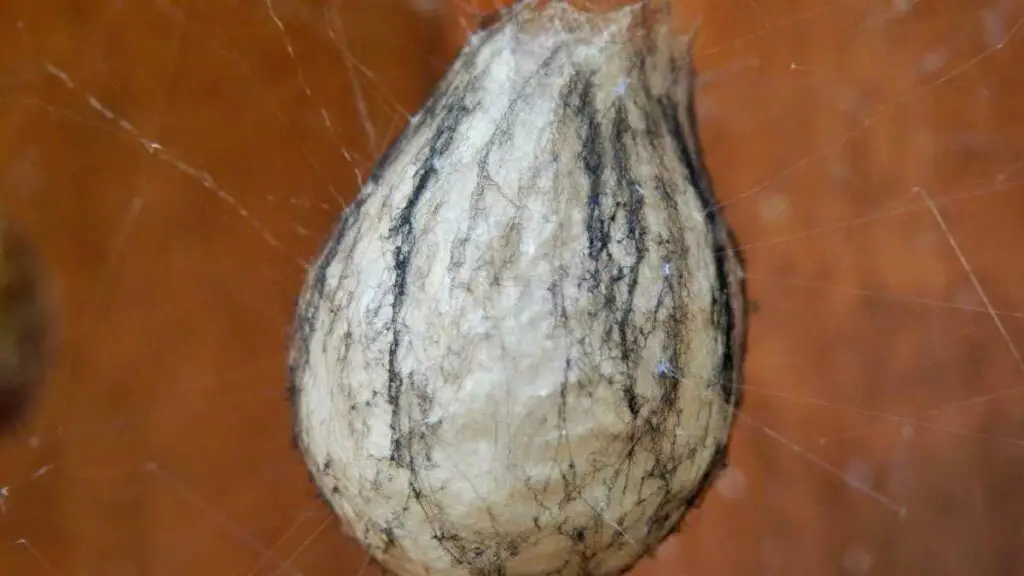
One egg sac, if left unchecked, is enough to cause a spider problem as it can hold as many as a hundred spiderlings. Egg sacs are found in active spider webs or other places like containers, boxes, etc.
Spiders’ droppings
While it is unlikely that you would notice them because they are very small, seeing spiders’ droppings is a good indicator of a spider infestation. The droppings look like tiny black paint splatters.
One last sign of a spider infestation is seeing spiders in the house. After all, all it takes to have hundreds of these eight-legged creatures crawling in your home is just two spiders (a male and a female)!
Spider infestation control; how to eliminate spiders
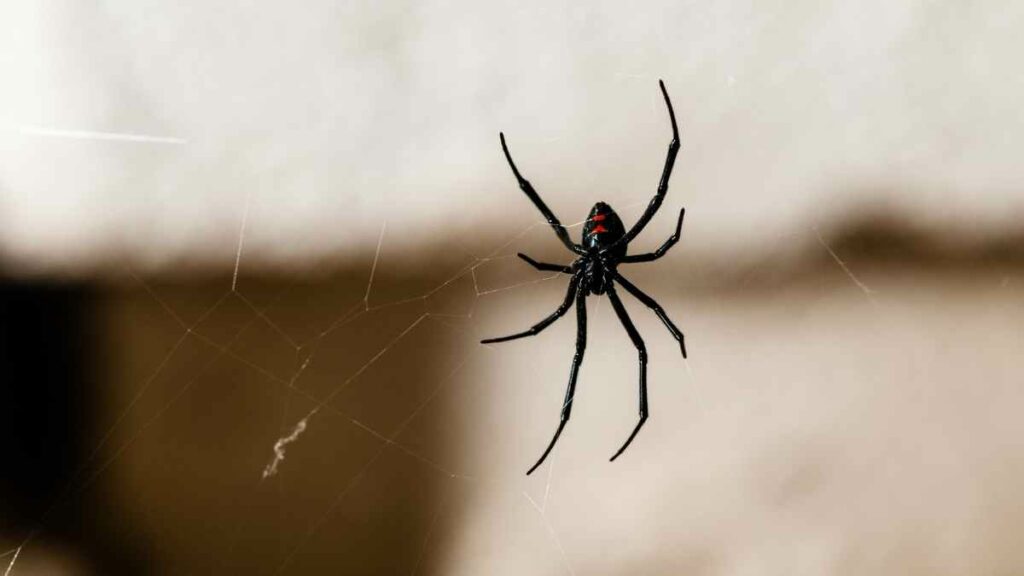
Here are effective ways to get rid of spiders in your house;
Vacuum
You can use powerful vacuum cleaners to remove spider webs, egg sacs, and even spiders from their hideouts in house corners, furniture, woodpiles, and other hard-to-reach spots and moist areas. Do well to vacuum other places where you think other spiders hide.
Glue traps
You can also employ glue traps as an alternative to chemicals when handling a spider infestation. The glue traps not only curbs spider infestation but can also be used to handle some insects.
You must place the glue trap where the spiders will likely pass through. For effectiveness, you should change the glue traps when they attract too much dirt or bugs.
Diatomaceous Earth
Using diatomaceous earth to kill spiders effectively tears them open and dries them out.
Just sprinkle the powder on places where the spiders pass often, and it will handle the rest. Endeavor to sweep places where you’re sprinkling the powder for effectiveness.
Pesticides/ engaging professional spider control
If you want fast results and don’t mind using chemicals, then a pesticide is what you need. Administer the pesticide using a fogger or a spray to allow for maximum effectiveness.
Alternatively, you can contact an exterminator/pest control professional to take care of your spider problem.
Prevention
Also, after ridding your house of these arachnids, you can take these steps to deter spiders altogether;
Blocking spider entry points
Since spiders wouldn’t be in your house if they had not gained entrance in the first place, what better way to prevent spider infestation than sealing potential entry points?
Pruning overgrown trees
Since spiders may use extended branches as passageways into your house, pruning overgrown trees reduce the chances of getting them into your home.
Remove potential spider food sources
Everything that attracts insects/bugs to your house should be removed.
Conclusion
If you can do all of the above, keep your environment as clean as possible, and inspect furniture/containers before bringing them into your house, your spider problem will be a thing of the past.
Good luck!

